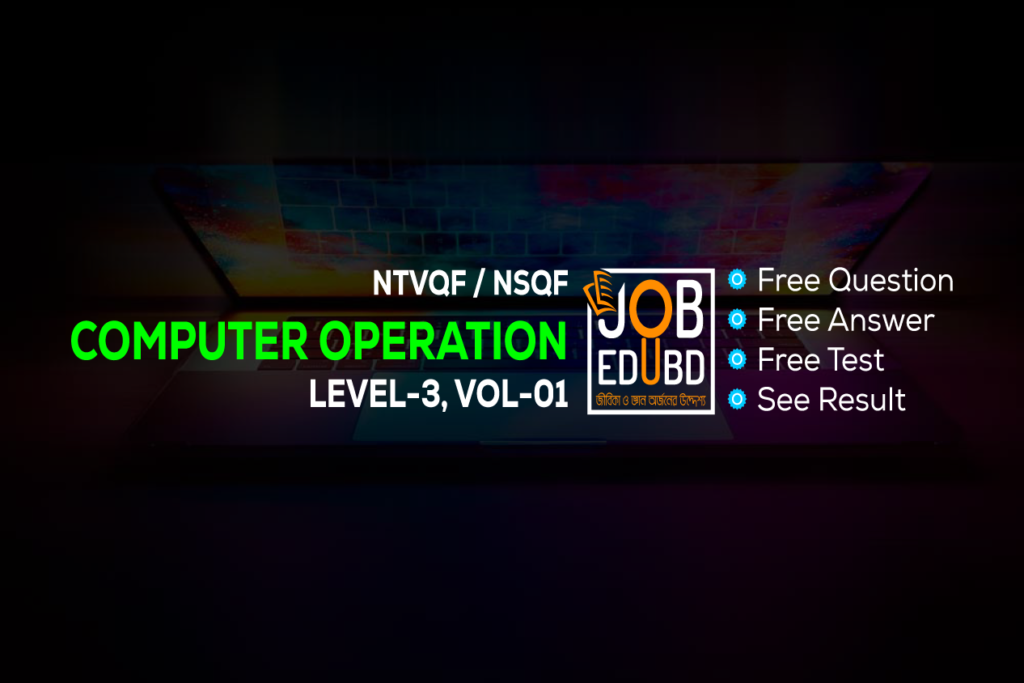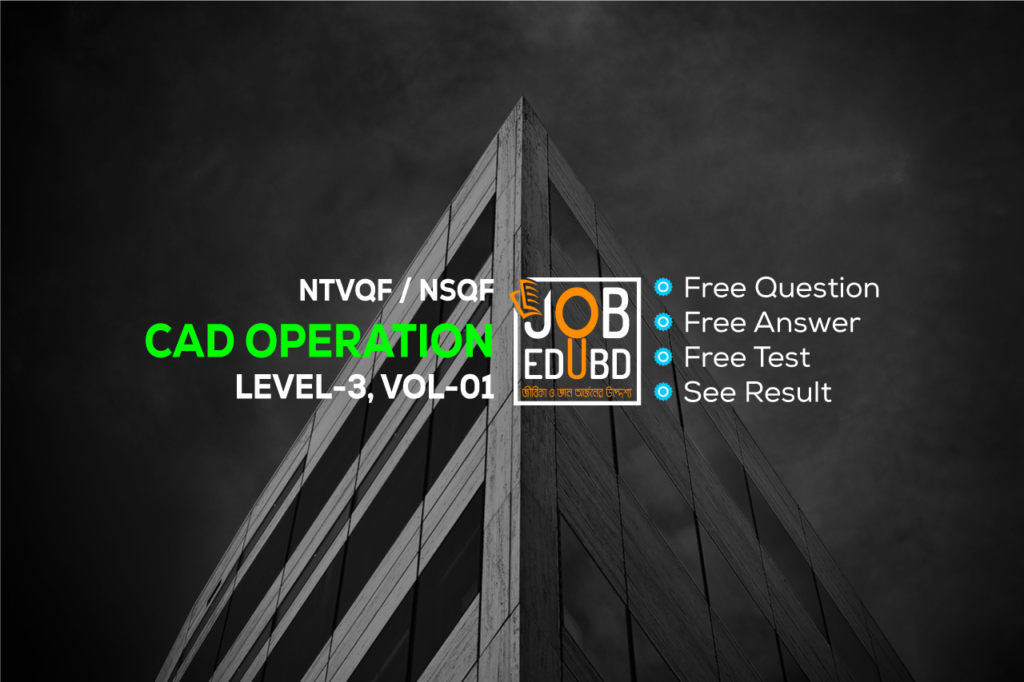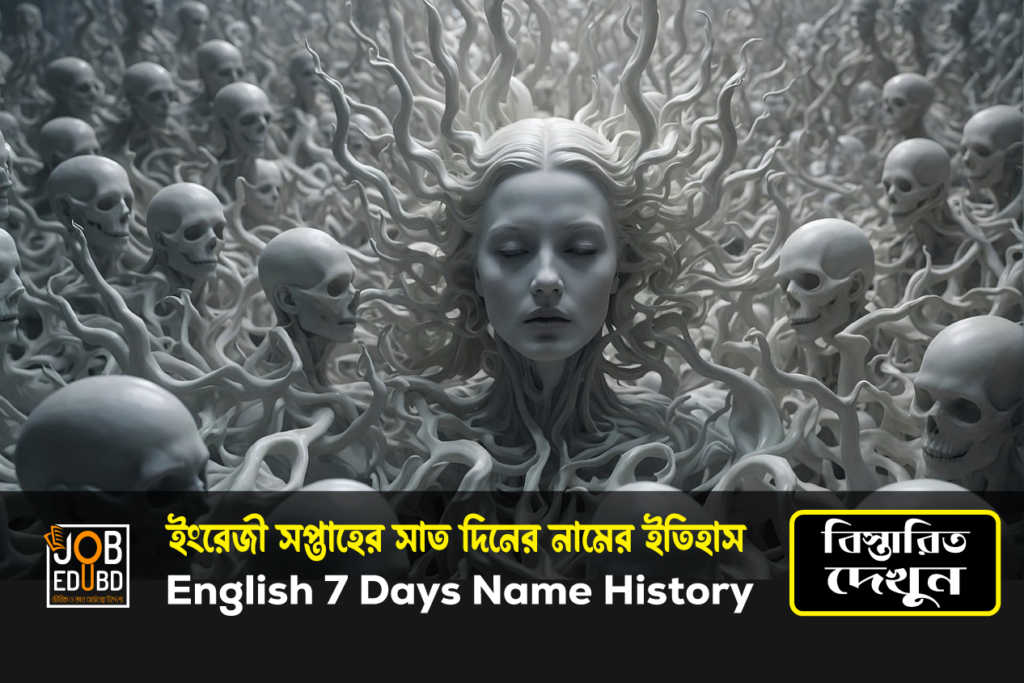Graphic Design Level-3 Suggestion V-7
Written Test Graphic Design Level-3 Suggestion V-7 by Job Edu BD
First, test yourself with the following MCQs, if you can’t do it, you can check the answer by clicking on the answer button.
Graphic Design level-3 Suggestion V-7
01. Which of the following tools is used to cut objects along a freehand path drawn with it, and to divide objects into component-filled faces?
- Scissors
- Pathfinder
- Knife
- Trim
02. Which one shows the pattern.
- Texture
- Temperature
- Template
- Tonality
03. Which operation controlled by Character menu?
- Hyphenation
- Type color
- Baseline shift
- All of the above
04. What is the shortcut key used in order to perform a free transformation?
- Ctrl + A
- Ctrl + F
- Ctrl+T
- Ctrl + X
05. Photoshop has two typing modes: Point type and Paragraph type. Which of the given statements is incorrect?
- Both modes are the same.
- Point mode can’t break a line.
- Paragraph mode is a multiple line.
- Both modes create a new layer.
06. Which of the following options is NOT a valid blending mode in Adobe Illustrator?
- Hard Light
- Overlay
- Multiply
- Dissolve
07. ………. is the name of the default Photoshop workspace.
- Enumeration
- Essentials
- Establishment
- Estrange
08. Stroke option in Photoshop, we have to select
- Select Menu
- Filter Menu
- Edit Menu
- None of these
09. To cut down the size of the entire graphic design, including all layers, you should select the …… tool.
- Marquee
- Magic wand
- Eraser
- Crop.
10. Drop Shadow, inner Glow and Bevel are the examples of ……… you need to use with text.
- Filters
- Blending options
- Image adjustments
- Layer modes.
11. What is the meaning of RGB?
- Cream Black Magenta Yellow
- Cream Green Black
- Blue Yellow Red
- Red Green Blue
12. In Adobe Illustrator, which of the following panels allows you to change the options for the blending mode?
- Layer panel
- Transparency panel
- Gradient panel
- Color pane
13. In Adobe Photoshop, which of the following options protects layers from losing their quality after resizing or other commands?
- Lock the style change,
- Rasterize the layer,
- Smart object layer.
- Masked layer.
14. In Adobe Illustrator, which of the following options is/are available while selecting a template for a new document?
- Mobile
- Film & Video
- All of the above.
15. Working with allows you to create independent pieces of paper that can be edited independently and later added to.
- Layers
- Smart Objects
- Slice Tool
- Shapes
16. Which of the following statements is/are true about creating a clipping mask?
- You can apply a clipping mask to non-vector objects.
- The last object in a layer or group masks everything that is in the layer/group.
- A clipping mask changes into an object with no fill or stroke
- All of the above.
17. Create an object centered at the selected point by pressing which of the following keys?
- Spacebar
- Shift key
- Alt key
- Shape tool
18. Green” is a ………… Color
- Secondary
- Primary
- Tertiary
- Tint
19. Adobe Illustrator is a/an graphics application.
- Raster-based
- Animation-based
- Vector-based
- None of the above.
20. A line that is drawn in adobe illustrator that finishes where it began is called a…..
- Closed path
- Symbols
- Open path
- Closed vector.
21. The keyboard shortcut of duplicate layer is
22. How can you activate the Timeline panel?
23. What is the Short-Cut key of Spelling & Grammar check?
24. How do you select a shape that has no fill?
25. In Adobe Photoshop, which of the following options protects layers from losing their quality after resizing or other commands?
26. Which of the following is used to convert a raster image to vector image?
27. “Green” is a ………… Color.
28. Which operation controlled by Character menu?
29. In color swatches, how will you pick a color for background?
30. Which unit we prefer for electronic media…….?
01. Which of the following tools is used to cut objects along a freehand path drawn with it, and to divide objects into component-filled faces?
C. Knife
02. Which one shows the pattern.
C. Template
03. Which operation controlled by Character menu?
B. Type color
04. What is the shortcut key used in order to perform a free transformation?
C. Ctrl+T
05. Photoshop has two typing modes: Point type and Paragraph type. Which of the given statements is incorrect?
A. Both modes are the same.
06. Which of the following options is NOT a valid blending mode in Adobe Illustrator?
D. Dissolve
07. ………. is the name of the default Photoshop workspace.
B. Essentials
08. Stroke option in Photoshop, we have to select
D. None of these
Note: selecting the element and then choosing Edit > Stroke.
09. To cut down the size of the entire graphic design, including all layers, you should select the …… tool.
D. Crop.
10. Drop Shadow, inner Glow and Bevel are the examples of ……… you need to use with text.
B. Blending options
11. What is the meaning of RGB?
D. Red Green Blue
12. In Adobe Illustrator, which of the following panels allows you to change the options for the blending mode?
B. Transparency panel
13. In Adobe Photoshop, which of the following options protects layers from losing their quality after resizing or other commands?
C. Smart object layer.
14. In Adobe Illustrator, which of the following options is/are available while selecting a template for a new document?
D. All of the above.
15. Working with allows you to create independent pieces of paper that can be edited independently and later added to.
A. Layers
16. Which of the following statements is/are true about creating a clipping mask?
B. The last object in a layer or group masks everything that is in the layer/group.
17. Create an object centered at the selected point by pressing which of the following keys?
C. Alt key
18. Green” is a ………… Color
A. Secondary
19. Adobe Illustrator is a/an graphics application.
C. Vector-based
20. A line that is drawn in adobe illustrator that finishes where it began is called a…..
A. Closed path
21. The keyboard shortcut of duplicate layer is
Ans: Ctrl + J
22. How can you activate the Timeline panel?
Ans: By selecting the windows memu.
23. What is the Short-Cut key of Spelling & Grammar check?
Ans: F7
24. How do you select a shape that has no fill?
Ans: Click the stock
25. In Adobe Photoshop, which of the following options protects layers from losing their quality after resizing or other commands?
Ans: Smart object layers
26. Which of the following is used to convert a raster image to vector image?
Ans: Live trace
27. “Green” is a ………… Color.
Ans: Secondary
28. Which operation controlled by Character menu?
Ans: Baseline shift
29. In color swatches, how will you pick a color for background?
Ans: By holding the ctrl key and picking a color.
30. Which unit we prefer for electronic media…….?
Ans: Pixel

MD. SALAHUDDIN
CSE, BUBT
In-Charge (Graphic Design)
Instructor
Bangladesh-German Technical Training Center
Mirpur-2, Dhaka-1216
Graphic Design Level-3 Suggestion V-3
"You will pass just by asking the mentioned questions, it's not like that at all, but chances are upto 80% to get common. This is just a suggestion. This question is not copied from any board question"
Related Post
Graphic design is a profession,[2] academic discipline[3][4][5] and applied art whose activity consists in projecting visual communications intended to transmit specific messages to social groups, with specific objectives.[6] Graphic design is an interdisciplinary branch of design[1] and of the fine arts. Its practice involves creativity, innovation and lateral thinking using manual or digital tools, where it is usual to use text and graphics to communicate visually.
The role of the graphic designer in the communication process is that of the encoder or interpreter of the message. They work on the interpretation, ordering, and presentation of visual messages. Usually, graphic design uses the aesthetics of typography and the compositional arrangement of the text, ornamentation, and imagery to convey ideas, feelings, and attitudes beyond what language alone expresses. The design work can be based on a customer’s demand, a demand that ends up being established linguistically, either orally or in writing, that is, that graphic design transforms a linguistic message into a graphic manifestation.[7]
Graphic design has, as a field of application, different areas of knowledge focused on any visual communication system. For example, it can be applied in advertising strategies, or it can also be applied in the aviation world[8] or space exploration.[9][10] In this sense, in some countries graphic design is related as only associated with the production of sketches and drawings, this is incorrect, since visual communication is a small part of a huge range of types and classes where it can be applied.
COPY
Graphic design has, as a field of application, different areas of knowledge focused on any visual communication system. For example, it can be applied in advertising strategies, or it can also be applied in the aviation world[8] or space exploration.[9][10] In this sense, in some countries graphic design is related as only associated with the production of sketches and drawings, this is incorrect, since visual communication is a small part of a huge range of types and classes where it can be applied.
With origins in Antiquity and the Middle Ages,[11] graphic design as applied art was initially linked to the boom of the rise of printing in Europe in the 15th century and the growth of consumer culture in the Industrial Revolution. From there it emerged as a distinct profession in the West, closely associated with advertising in the 19th century[12] and its evolution allowed its consolidation in the 20th century. Given the rapid and massive growth in information exchange today, the demand for experienced designers is greater than ever, particularly because of the development of new technologies and the need to pay attention to human factors beyond the competence of the engineers who develop them.[13]
History: In both its lengthy history and in the relatively recent explosion of visual communication in the 20th and 21st centuries, the distinction between advertising, art, graphic design and fine art has disappeared. They share many elements, theories, principles, practices, languages and sometimes the same benefactor or client. In advertising, the ultimate objective is the sale of goods and services. In graphic design, “the essence is to give order to information, form to ideas, expression, and feeling to artifacts that document the human experience.”[17]
The definition of the graphic designer profession is relatively recent concerning its preparation, activity, and objectives. Although there is no consensus on an exact date when graphic design emerged, some date it back to the Interwar period. Others understand that it began to be identified as such by the late 19th century.[11]
It can be argued that graphic communications with specific purposes have their origins in Paleolithic cave paintings and the birth of written language in the third millennium BCE. However, the differences in working methods, auxiliary sciences, and required training are such that it is not possible to clearly identify the current graphic designer with prehistoric man, the 15th-century xylographer, or the lithographer of 1890.
The diversity of opinions stems from some considering any graphic manifestation as a product of graphic design, while others only recognize those that arise as a result of the application of an industrial production model—visual manifestations that have been “projected” to address various needs: productive, symbolic, ergonomic, contextual, among others.
Nevertheless, the evolution of graphic design as a practice and profession has been closely linked to technological innovations, social needs, and the visual imagination of professionals.[18] Graphic design has been practiced in various forms throughout history; in fact, good examples of graphic design date back to manuscripts from ancient China, Egypt, and Greece. As printing and book production developed in the 15th century, advances in graphic design continued over the subsequent centuries, with composers or typographers often designing pages according to established type.[11]
By the late 19th century, graphic design emerged as a distinct profession in the West, partly due to the process of labor specialization that occurred there and partly due to the new technologies and business possibilities brought about by the Industrial Revolution. New production methods led to the separation of the design of a communication medium (such as a poster) from its actual production. Increasingly, throughout the 19th and early 20th centuries, advertising agencies, book publishers, and magazines hired art directors who organized all visual elements of communication and integrated them into a harmonious whole, creating an expression appropriate to the content. In 1922, typographer William A. Dwiggins coined the term graphic design to identify the emerging field.[11]
Throughout the 20th century, the technology available to designers continued to advance rapidly, as did the artistic and commercial possibilities of design. The profession expanded greatly, and graphic designers created, among other things, magazine pages, book covers, posters, CD covers, postage stamps, packaging, brands, signs, advertisements, kinetic titles for TV programs and movies, and websites. By the early 21st century, graphic design had become a global profession as advanced technology and industry spread worldwide.[11]
Graphic design can have many applications, from road signs to technical schematics and reference manuals. It is often used in branding products and elements of company identity such as logos, colors, packaging, labelling and text.
From scientific journals to news reporting, the presentation of opinions and facts is often improved with graphics and thoughtful compositions of visual information – known as information design. With the advent of the web, information designers with experience in interactive tools are increasingly used to illustrate the background to news stories. Information design can include Data and information visualization, which involves using programs to interpret and form data into a visually compelling presentation, and can be tied in with information graphics.
Skill: A graphic design project may involve the creative presentation of existing text, ornament, and images.
The “process school” is concerned with communication; it highlights the channels and media through which messages are transmitted and by which senders and receivers encode and decode these messages. The semiotic school treats a message as a construction of signs which through interaction with receivers, produces meaning; communication as an agent.[citation needed]
Typography
Typography includes type design, modifying type glyphs and arranging type. Type glyphs (characters) are created and modified using illustration techniques. Type arrangement is the selection of typefaces, point size, tracking (the space between all characters used), kerning (the space between two specific characters) and leading (line spacing).
Typography is performed by typesetters, compositors, typographers, graphic artists, art directors, and clerical workers. Until the digital age, typography was a specialized occupation. Certain fonts communicate or resemble stereotypical notions. For example, the 1942 Report is a font which types text akin to a typewriter or a vintage report.[36]
From Wikipedia, the free encyclopedia
Post review
Finding Your Post
Graphic Design Level-3 Suggestion V-7 NSQF / NTVQF CAD Operation Level-3 Suggestion V-4, NSQF NTVQF, CAD Operation Level-3 Suggestion V-4, Job Edu BD, NSQF NTVQF NSDA BTEB Suggestion Vol-1
Graphic Design Level-3 Suggestion V-7 NSQF / NTVQF CAD Operation Level-3 Suggestion V-4, NSQF NTVQF, CAD Operation Level-3 Suggestion V-4, Job Edu BD, NSQF NTVQF NSDA BTEB Suggestion Vol-1 NSQF NTVQF NADA BTEB Graphic Design Level-3 Suggestion V-7
Graphic Design Level-3 Suggestion V-6 NSQF / NTVQF CAD Operation Level-3 Suggestion V-4, NSQF NTVQF, CAD Operation Level-3 Suggestion V-4, Job Edu BD, NSQF NTVQF NSDA BTEB Suggestion Vol-1 NSQF NTVQF NADA BTEB Graphic Design Level-3 Suggestion V-7







